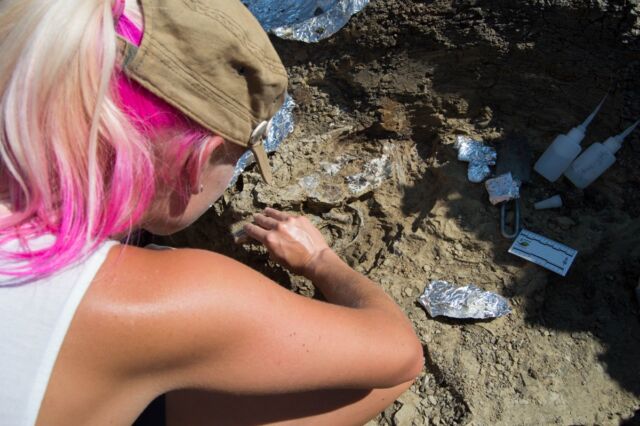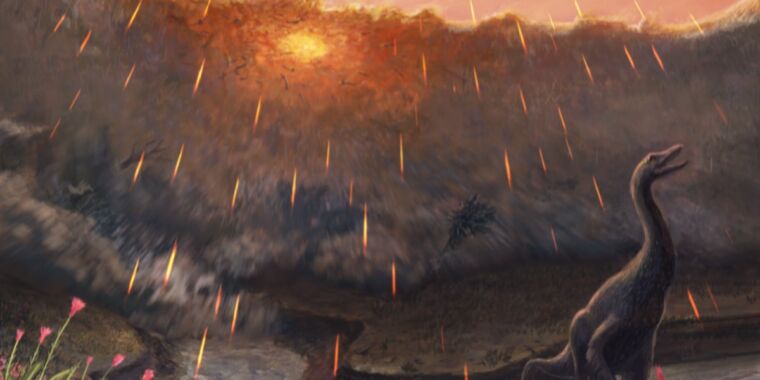An international team of scientists used synchrotron radiation to image and analyze fossilized fish from the Tanis deposit in North Dakota.
Some 66 million years ago, a catastrophic event wiped out three-quarters of all plant and animal species on Earth, most notably taking down the dinosaurs. The puzzle of why so many species perished while others survived has long intrigued scientists.
A new paper published in the journal Nature concludes that one reason for this evolutionary selectivity is the timing of the impact. Based on their analysis of fossilized fish killed immediately after the impact, the authors have determined that the extinction event occurred in the spring—at least in the Northern Hemisphere—interrupting the annual reproductive cycles of many species.
As we’ve reported previously, the most widely accepted explanation for what triggered that catastrophic mass extinction is known as the “Alvarez hypothesis,” after the late physicist Luis Alvarez and his geologist son, Walter. In 1980, they proposed that the extinction event may have been caused by a massive asteroid or comet hitting the Earth.
An errant asteroid from the asteroid belt has been deemed the most likely culprit. Last year, Harvard astronomers offered an alternative candidate: a special kind of comet originating from the Oort cloud, a field of debris at the edge of our solar system. The comet was thrown off course by Jupiter’s gravity toward the Sun. But for now, an errant asteroid is the broadly accepted consensus.

Jackson Leibach
The most likely impact site is a large crater first discovered by geophysicists in the late 1970s in Chicxulub, Mexico, in the Yucatan Peninsula. In 2016, a scientific drilling project led by the International Ocean Discovery Program took core samples from the crater’s peak ring, confirming that the rock had been subjected to immense pressure over a period of minutes. And in 2020, a paper published in Nature Communications concluded that the impactor struck at the worst possible angle and caused maximum damage.
The impactor was sufficiently large (between 11 and 81 kilometers, or 7 to 50 miles) to melt, shock, and eject granite from deep inside the Earth, probably causing a megatsunami and ejecting vaporized rock and sulfates into the atmosphere. Geological evidence for large-scale forest fires has also been documented. Researchers have estimated that the impact would have released energy over a billion times higher than the atomic bombs dropped on Hiroshima and Nagasaki in 1945. All of this had a devastating effect on global climate, leading to mass extinction.
But the Cretaceous–Paleogene (K-Pg) extinction event remains a puzzle for scientists because the extinctions were so selective. All the non-avian dinosaurs, pterosaurs, ammonites, and nearly all marine reptiles were wiped out, but many species of mammals, birds, crocodiles, and turtles survived. The authors of this latest paper hypothesized that perhaps the seasonal timing of the impact event affected which species perished and which survived.








